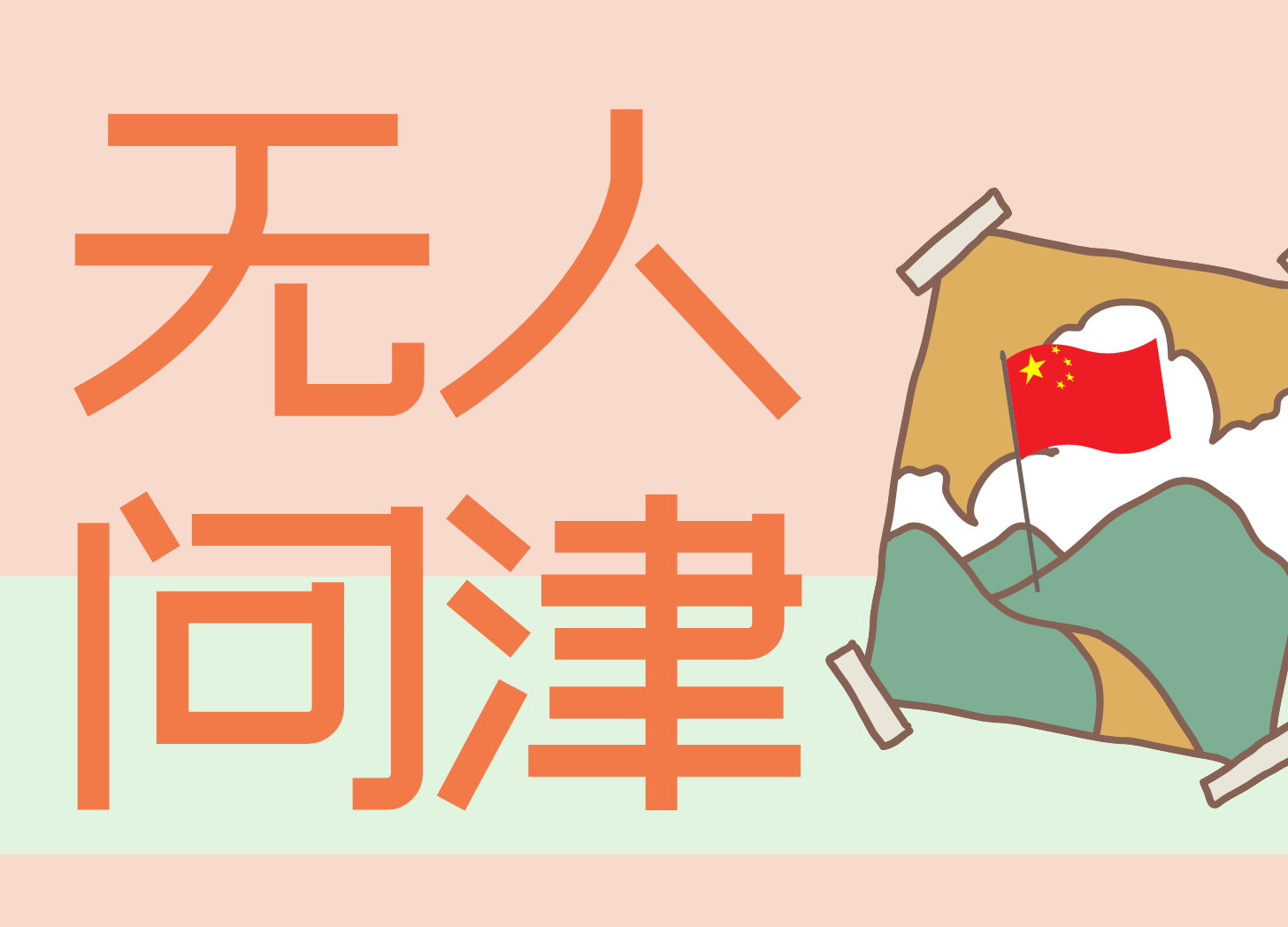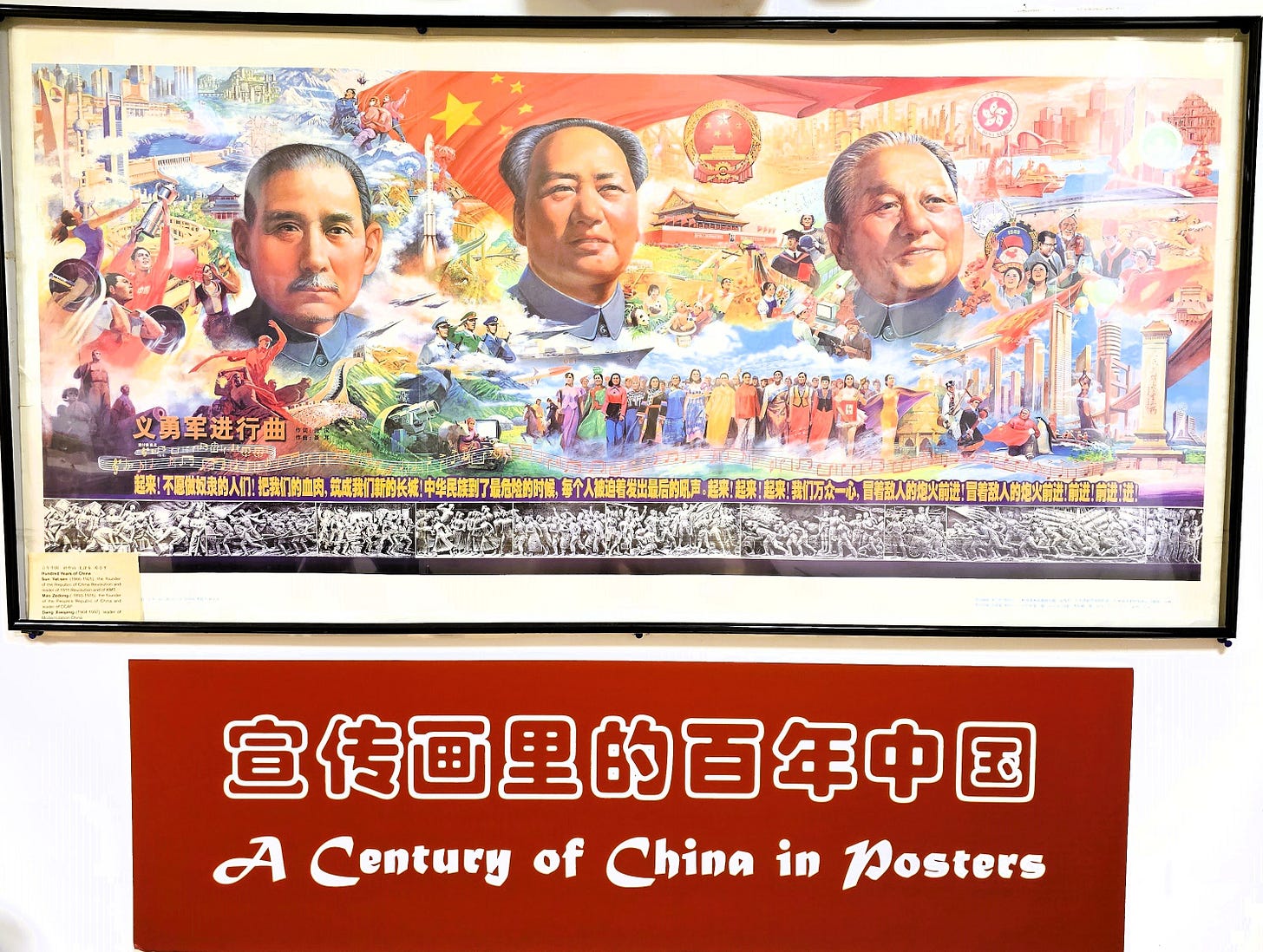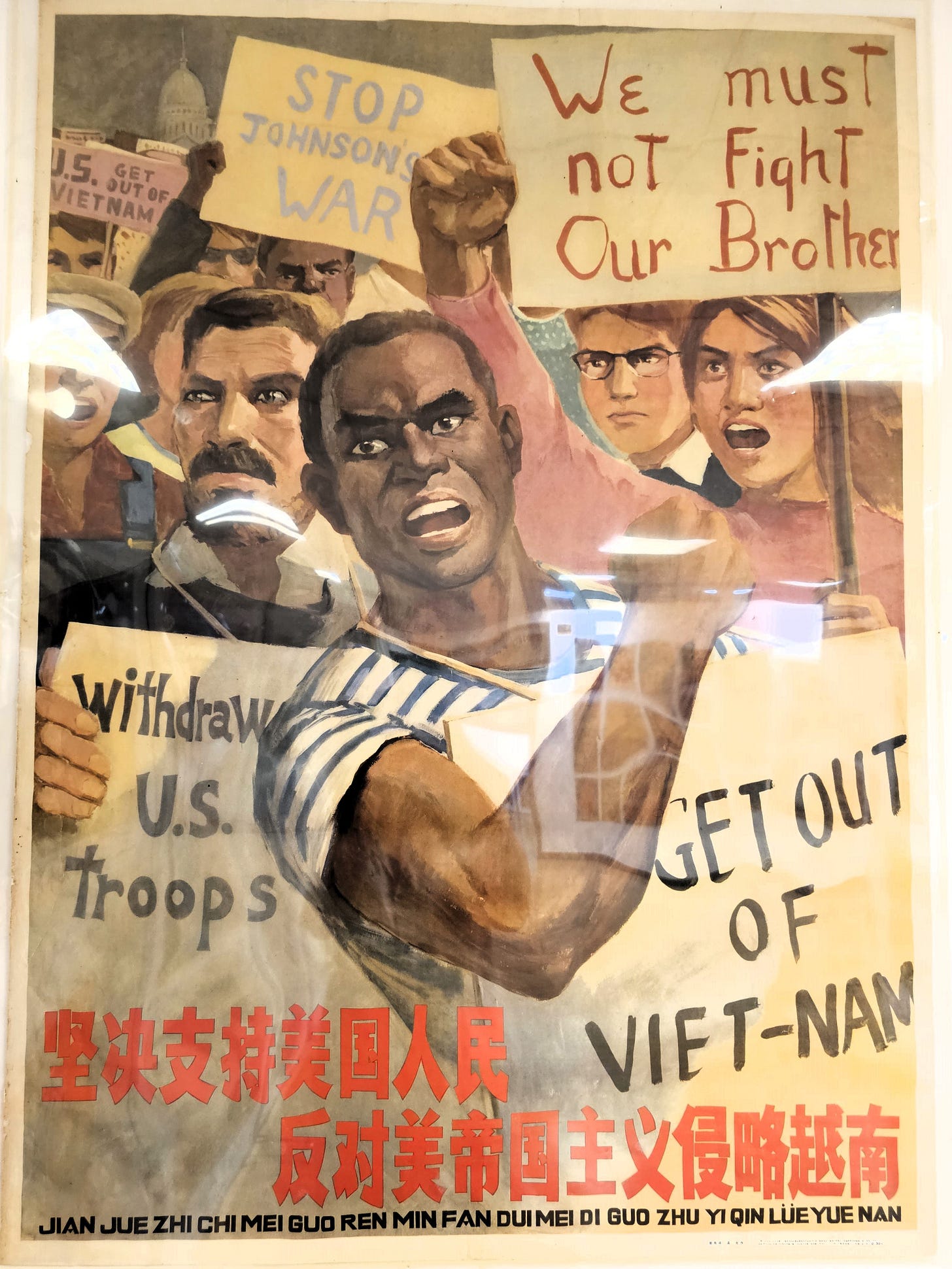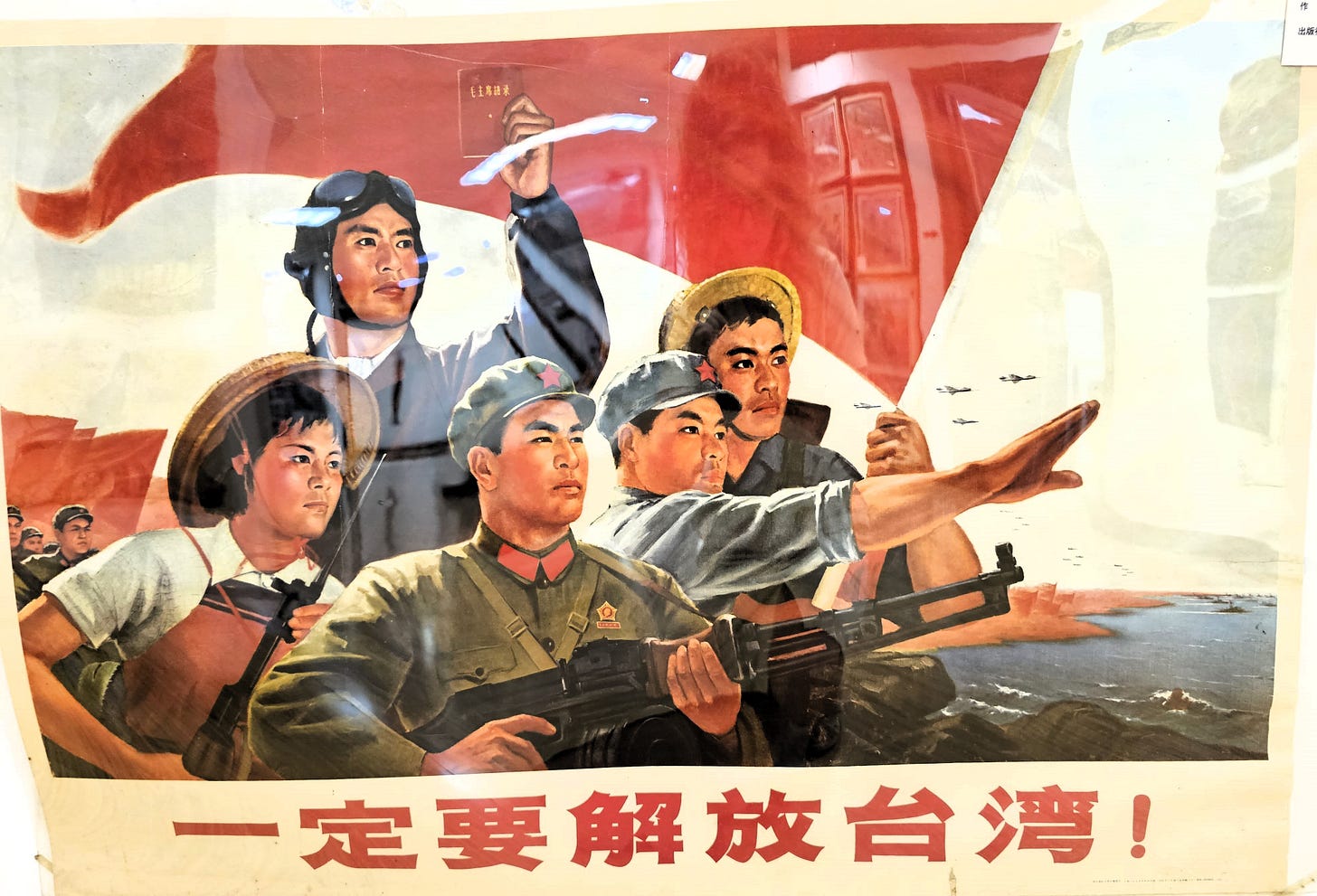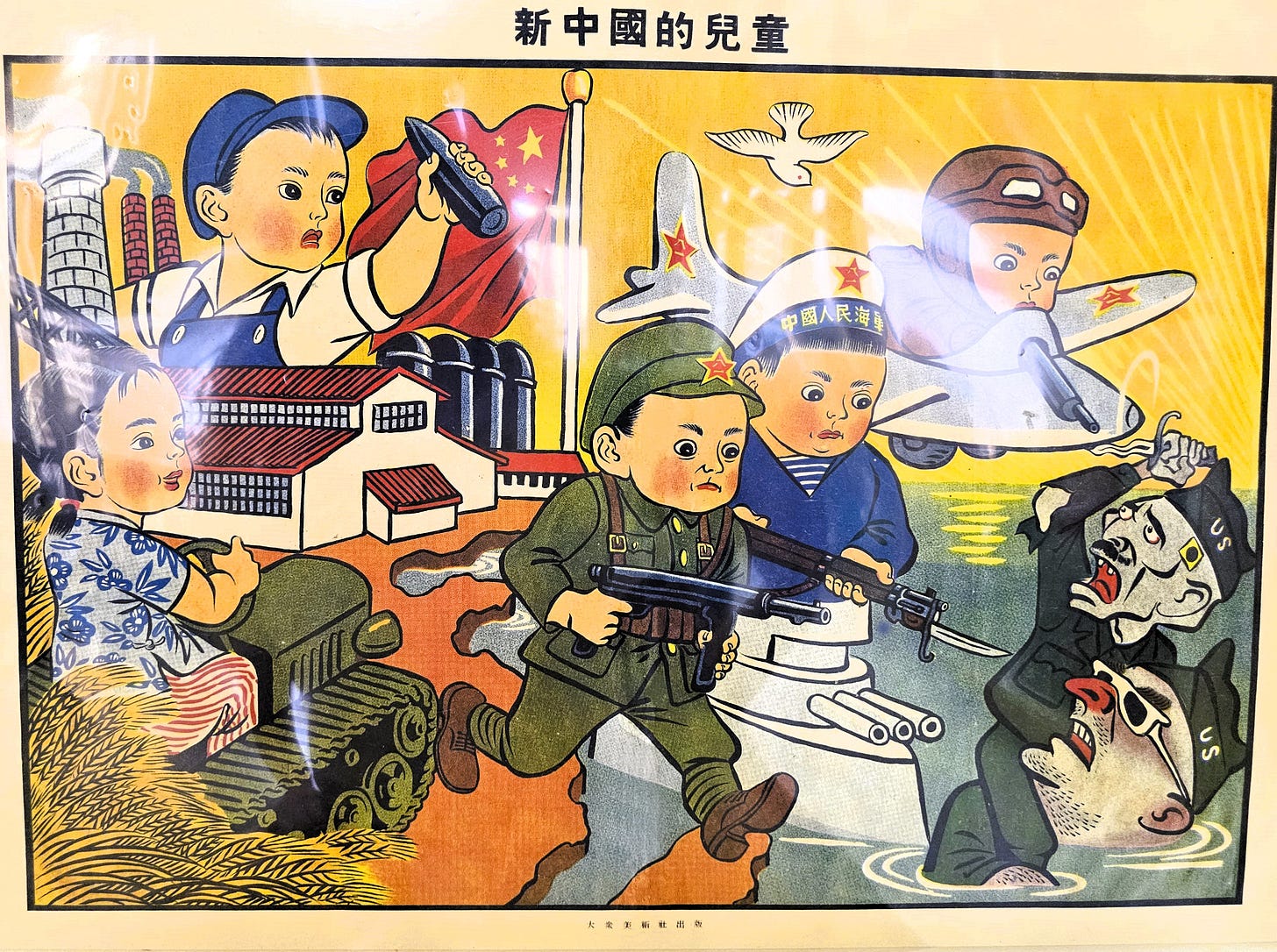Shanghai Propaganda Poster Art Center
Let’s explore a lesser-known facet of Chinese art 🇨🇳🖌️
Idiom of the week: 无人问津 (wú rén wèn jīn)
Meaning: Nobody troubles to ask; nobody is interested; forgotten.
以前出现在中国城乡大街小巷、几毛钱就可以买到一张的宣传画或是海报现在已经无人问津了。The propaganda paintings or posters that used to be found in all streets and alleys of cities and towns in China, and which could be bought for a few cents, are now forgotten.
If you ever planned a trip to Shanghai, you must have heard about its fantastic Chinese propaganda art museum! Although this private facility is largely hidden from the public eye and placed in the faraway (from a tourist’s perspective) Changning district, it is one of the top attractions in Shanghai for foreign visitors.
The museum will guide you through the history of China in the 20th century, especially during the early Chinese communism and the era of Mao Zedong. It is a private collection of Mr. Yang Pei-ming, who started collecting posters as a hobby in 1995.
政治宣传画和海报在中国文化大革命时期极为盛行。当时的艺术家们无法自由进行艺术创作,绘制宣传画等政治宣传材料不仅可以维持他们的工作,而且还能让艺术工作者们逃避那个年代的政治动荡。
政治宣传画 (zhèngzhì xuānchuánhuà) - political propaganda paintings
海报 (hǎibào) - posters
文化大革命 (wénhuà dàgémìng) - Cultural Revolution
极为 (jíwéi) - extremely
盛行 (shèngxíng) - prevalent or popular
艺术创作 (yìshù chuàngzuò) - artistic creation
绘制 (huìzhì) - to create a drawing/illustration
宣传材料 (xuānchuán cáiliào) - propaganda materials
逃避 (táobì) - to escape
政治动荡 (zhèngzhì dòngdàng) - political turmoil
Political propaganda paintings and posters were extremely popular during the Cultural Revolution in China. At that time, artists could not freely create art, and producing propaganda materials such as these not only allowed them to maintain their jobs but also helped artists escape the political turmoil of that era.
“有人觉得宣传画就是为了政治的宣传,但其实里面有很多艺术的灵感”,上海宣传画艺术中心的创办人杨培明说。”这段历史中的艺术作品虽然丰富,可惜没有收到很大的重视,所以大部分作品已不存在。”
杨培明先生自幼就喜欢收集邮票,从1995年开始因为无意间受到一位酷爱艺术收藏的朋友的影响,他开始收集中国宣传画和宣传海报。到目前为止他在这方面的收藏可谓是世界之最。以前出现在中国城乡大街小巷、几毛钱就可以买到一张的宣传画或是海报现在已经无人问津了,不仅街面上看不到了,就是连学校、机关单位也不再张贴这些宣传画了。
灵感 (línggǎn) - inspiration
邮票 (yóupiào) - stamps
无意间 (wú yì jiān) - unintentionally or by chance
酷爱 (kù'ài) - to love passionately or to be very fond of
收藏 (shōucáng) - collection
可谓 (kě wèi) - can be said to be or is considered
世界之最 (shìjiè zhī zuì) - the largest in the world
影响 (yǐngxiǎng) - influence
世界之最 (shìjiè zhī zuì) - largest in the world
大街小巷 (dàjiē xiǎoxiàng) - streets and alleys
无人问津 (wú rén wèn jīn) - forgotten
机关单位 (jīguān dānwèi) - government offices
“Some people think that propaganda paintings are solely for political promotion, but in fact, they contain a lot of artistic inspiration,” says Mr. Yang Peiming, the founder of the Shanghai Propaganda Poster Art Center. “Although the artworks from this period were abundant, they unfortunately have not received much attention, so most of them no longer exist.”
Mr. Yang has loved collecting stamps since childhood. Starting in 1995, influenced by a friend who was passionate about art collecting, he began to collect Chinese propaganda paintings and posters. To date, his collection in this area is considered the largest in the world. The propaganda paintings or posters that used to be found on the streets and alleys of cities and towns in China, which could be bought for a few cents, are now forgotten. Not only are they no longer seen on the streets, but even schools and government offices have stopped posting them.
对于如何宣传这一批具有独特历史的画作,杨培明继续说:“现在大家认识的艺术除了当代就是古代书画艺术,而中间的这段艺术历史便被连环画填补了空白。上海杨培明宣传画收藏艺术馆收藏有6000多种类的宣传画,作品除了馆内的常规展示,在也会经常远赴西方国家进行交流,宣传中国的这段时期的历史和艺术。”
书画艺术 (shūhuà yìshù) - calligraphy and painting art
连环画 (liánhuánhuà) - comic strips
填补 (tiánbǔ) - fill
常规展示 (chángguī zhǎnshì) - regular exhibitions
远赴 (yuǎnfù) - to go to (a place) far away
宣传 (xuānchuán) - promote
Regarding how to promote this collection of artworks with unique historical significance, Yang Peiming continued: “The art that people recognize today is either contemporary or ancient calligraphy and painting, while the art history in between is filled by comic strips. The Shanghai Yang Peiming Propaganda Painting Collection Art Museum has over 6,000 types of propaganda paintings. In addition to regular exhibitions within the museum, these works are frequently taken to Western countries for exchanges to promote the history and art of this period in China.”
Have you been to the museum already? Did you like it?
Antoine & Dorota
Referenced authors: 天津美术网, Ardi Bouwers




